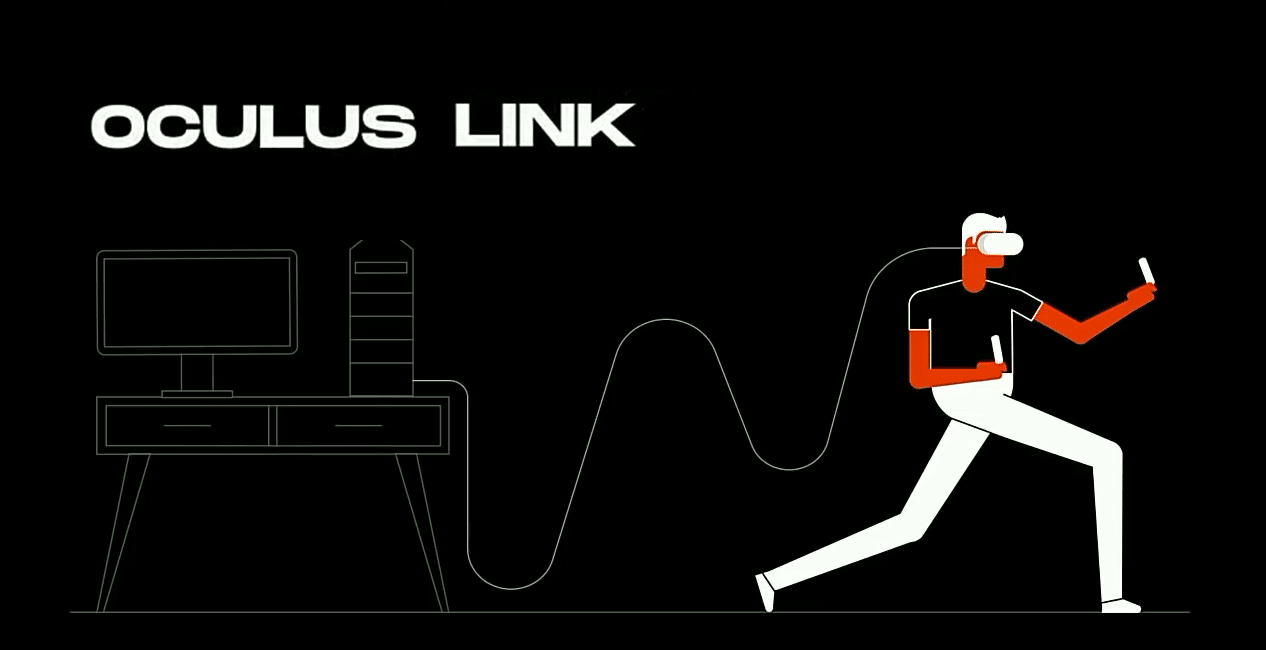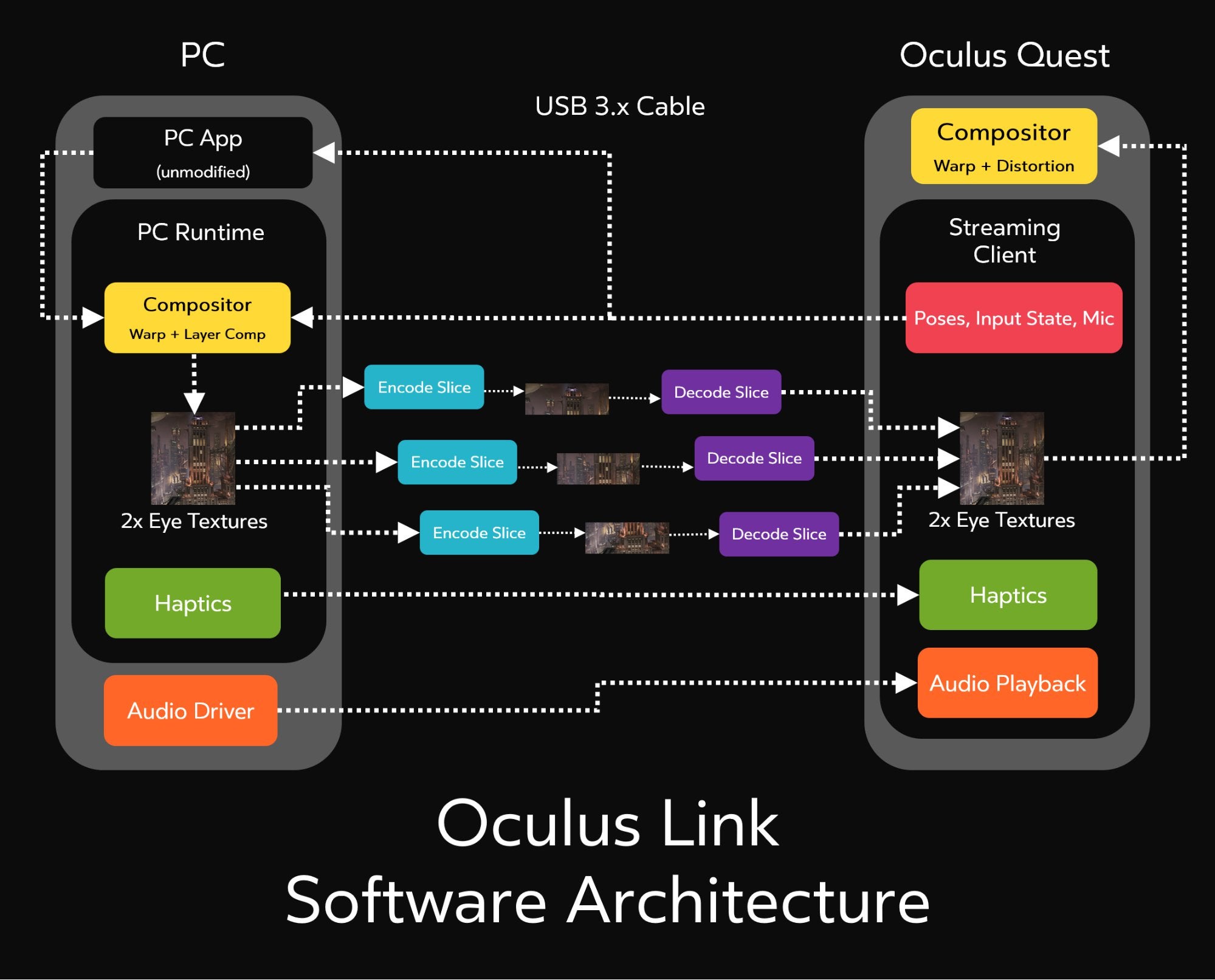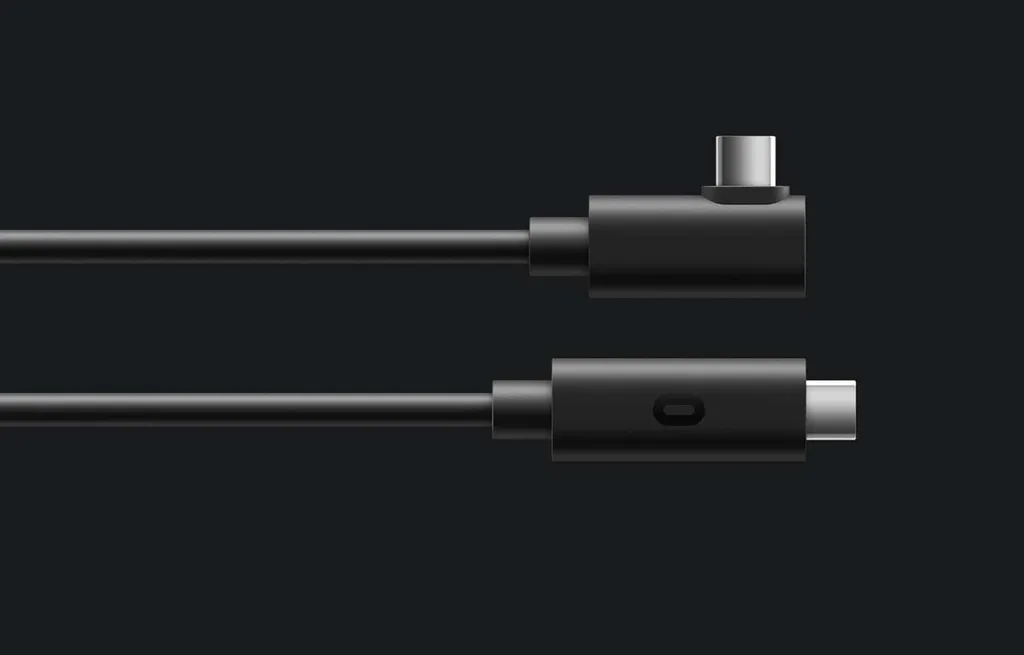Oculus Link will get support for Quest 2’s 90Hz refresh rate mode, and Facebook’s engineers are “tackling compression” soon after launch.
Link is the PC VR mode of Quest headsets, which works via a USB cable. It was added six months after Quest launched. Link required USB 3.0, but earlier this year got support for USB 2.0 connections too.

Link is exiting Beta this year. It will get support for Quest 2’s 90Hz display, making it Facebook’s first 90Hz PC offering since the original Rift- and first ever for standalone.
Compression, Bitrate, and Snapdragon XR2
“Real” PC headsets send raw frames over DisplayPort. Link works by compressing the video stream using your GPU’s video encoder to make it small enough to send over USB. The Quest headset decodes the video stream with the Snapdragon chip’s video decoder.
Video compression sacrifices quality for dramatically decreasing required bandwidth. Compressed videos can have visual artifacts caused by shortcuts the encoder had to take to keep the frame small enough. Generally, how noticeable these artifacts are depends on the video bitrate- the higher it is, the less noticeable they become.
The current Oculus Link’s compression is fairly hard to notice, but it is there if you look for it- and in darker scenes it’s more apparent.
But until Quest 2, Link’s bitrate was limited to what the Snapdragon 835’s decoder can handle in real time- around 150 Mbps.

Quest 2’s Snapdragon XR2 has a more capable video decoder- though by how much is not public knowledge. Facebook tells us it’ll take advantage of the XR2’s increased capabilities to “tackle” compression and handle it “more elegantly”. These improvements won’t be available at launch, though, they’re slated for a near future software update.
With Oculus Rift S being retired in Spring and Facebook vowing no more PC-only headsets, Link will- and should- be compared to “real” PC headsets. With 90Hz and higher bitrates, can Link really deliver the same experience? We’ll let you know as soon as we get access to these features.


























